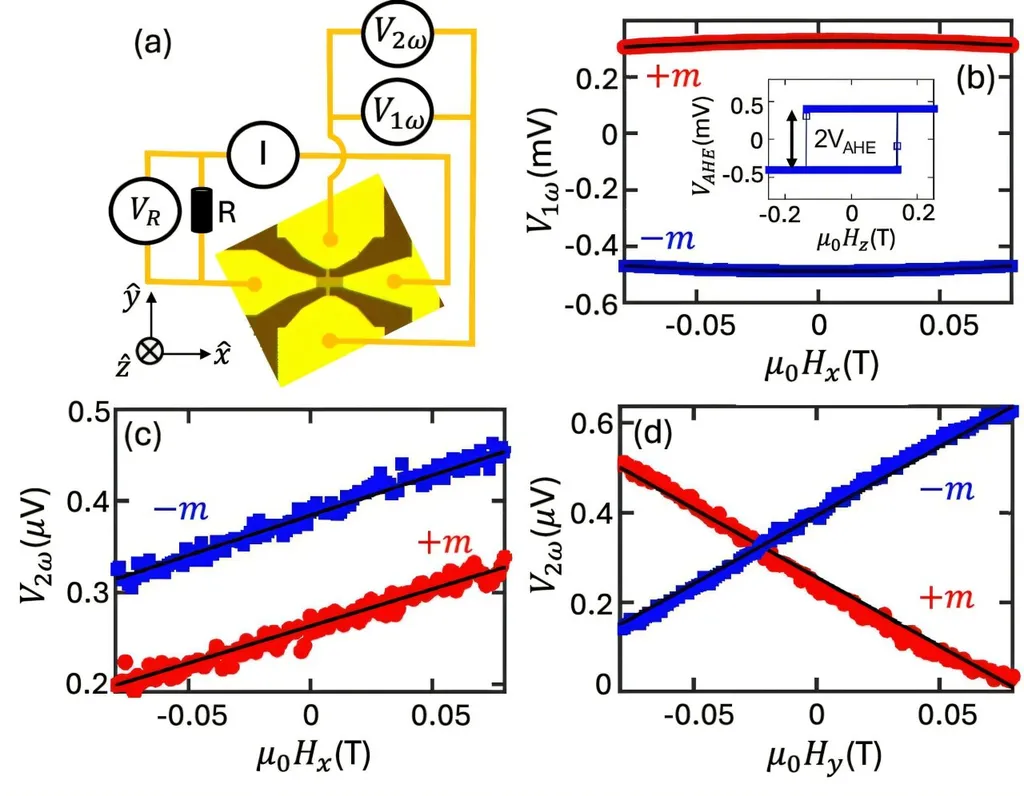In the quest for more efficient and powerful data storage solutions, researchers are turning to the intriguing world of spintronics, where the spin of electrons, rather than their charge, is used to encode information. A recent study published in ‘Materials Research Express’ (which translates to ‘Expressions of Material Research’) has shed new light on the performance of spin-orbit torque magnetic random-access memory (SOT-MRAM), a promising technology that could revolutionize the energy sector by significantly reducing power consumption in data centers and other high-performance computing environments.
At the heart of this research is Piyush Tankwal, a scientist from the Department of Electrical and Electronics Engineering at the Birla Institute of Technology & Science in Pilani, India. Tankwal and his team have conducted a comprehensive comparative study of various materials used in SOT-MRAM devices, aiming to identify the optimal choices for enhancing performance and energy efficiency.
Spin-orbit torque technology enables precise control of magnetic states through the generation of spin currents, a phenomenon that arises from the interaction between an electron’s spin and its motion. This technology offers a more efficient way to switch magnetization, a critical process in data storage, with significantly lower power consumption compared to traditional methods.
“The precise control in magnetization switching with low power consumption in SOT based devices offers advancements in memory and logic applications,” Tankwal explained. His team analyzed key material properties such as spin-Hall conductivity, resistivity, damping constant, and spin-Hall angle, evaluating how these factors influence the efficacy of SOT applications.
The study examined a range of materials, including topological insulators like Bi2Se3, heavy metals such as Pt, Ta, and W, transition metal dichalcogenides like WTe2 and MoTe2, and ferromagnetic alloys like IrMN. Each material was assessed based on its critical current density, material properties, retention time, and temperature stability, all of which are crucial for the commercial viability of SOT-MRAM.
The findings of this research are poised to shape the future of spintronics, offering a framework for selecting materials based on specific performance criteria. As the energy sector increasingly demands more efficient and powerful data storage solutions, the insights provided by Tankwal and his team could pave the way for next-generation spintronic devices that are not only more powerful but also more energy-efficient.
“This comparative analysis contributes to the progression of SOT technology and supports the progress of next-generation spintronic devices,” Tankwal noted. The implications of this research extend beyond the lab, offering a glimpse into a future where data centers and high-performance computing environments operate with unprecedented efficiency, driven by the innovative use of spin-orbit torque technology.
As the field of spintronics continues to evolve, the work of Tankwal and his colleagues serves as a testament to the power of interdisciplinary research and the potential of emerging technologies to transform entire industries. The journey towards more efficient and powerful data storage solutions is far from over, but with each new discovery, we edge closer to a future where the full potential of spintronics is realized.

